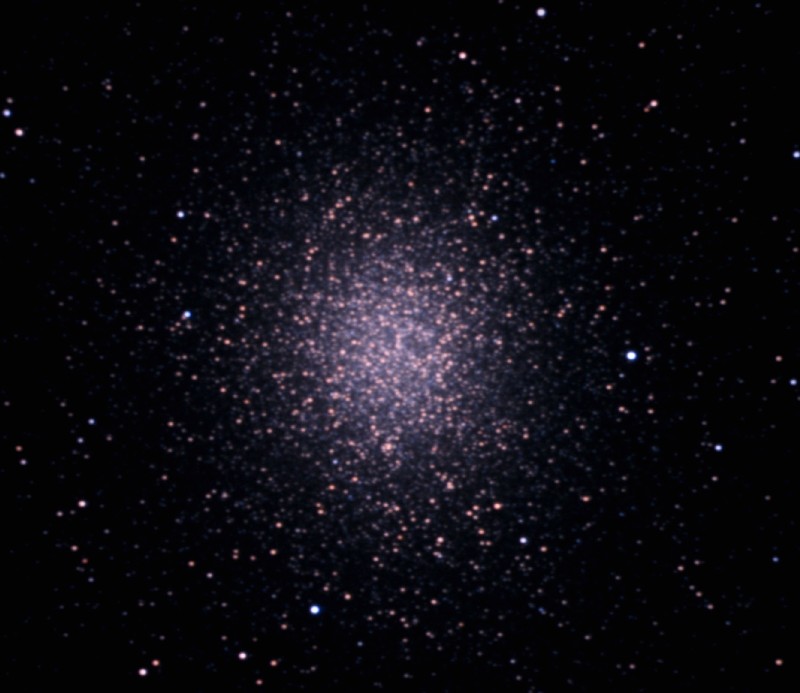

|
|
| C80, (NGC 5139), The Omega
Centauri Globular Cluster, Next to M13 for comparison. Distance from us 15,000 light years |
|
Omega Centauri is the largest globular cluster in our galaxy, and arguably the finest as well: particularly for our southern hemisphere viewers. It can be seen low in the sky from our southern tier of states between April and July. It can be seen as a small fuzzy object without optical aid, and is a great sight with binoculars, and spectacular in a telescope. For comparison, I've placed M13, the biggest, brightest, and best known of the northern hemisphere's globulars. As you can see, it's no contest. Omega Centauri, or Caldwell 80 (C80) does have the advantage of being a closer, 15k light years compared to 25k for M13 - thus the larger stars, but it also has an estimated 10 million stars compared to M13's maybe 1/2 million. With some evidence to back it up, some speculate that of all the globulars in the Milky Way, C80 may be the remnant of a dwarf galaxy, stripped of all but it's central core of stars. There is pretty good evidence that there is a black hole at its center, a characteristic of a galaxy, and unlike most globulars which are almost all older stars, it has a much more varied population. |
|
10"
F6.3 Schmidt Cassegrain Telescope, (1600mm F.L.) Canon 40D camera placed at the scope's prime focus |